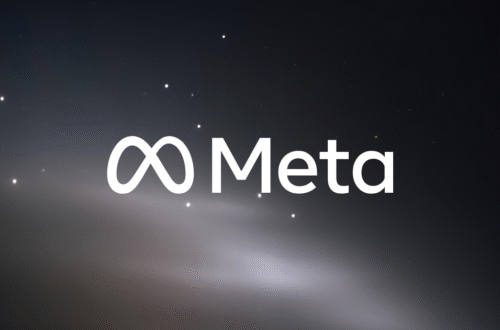For years, Apple sat on the sidelines while Google, Microsoft, & OpenAI duked it out in the great AI arms race. We got chatbot wars, wild image generators, & enough hype to power a small city. Apple? They gave us a better autocorrect. But at WWDC 2024, the curtain finally dropped. It’s not called “Apple AI,” because of course it isn’t. It’s “Apple Intelligence,” a suite of tools deeply woven into the fabric of iOS 18, iPadOS 18, & macOS Sequoia. The big twist? Apple is taking a radically different path, betting the farm on on-device processing. Yet, in the same breath, they announced a partnership with the king of cloud AI, OpenAI, to bring GPT-4o into the fold. This isn’t just a feature update; it’s a philosophical showdown between privacy & power, played out right on your iPhone.
So, What Exactly is Apple Intelligence?
Forget the single, all-knowing chatbot assistant you see elsewhere. Apple Intelligence isn’t one thing; it’s a system of smaller, specialized generative models designed to run directly on your device. Think of it as a bunch of tiny, efficient AI gnomes living inside your phone, each with a specific job. One gnome is great at summarizing your unread emails, another is a pro at rewriting a paragraph to sound more professional, & a third can dig through your photo library to find that one specific pic of your dog wearing a hat. The key here is “on-device.”
Because these models run on the silicon you already own, they have access to your personal context in a way that would be terrifying if it were sent to a server somewhere. It sees your calendar, reads your messages, & knows your contacts. This lets it do things that a cloud-based AI simply can’t. For instance:
- Deeply Personal Commands: You could ask Siri to “pull up the files Tim sent me last week on Dropbox” or “play the podcast my wife recommended in Messages.” The AI understands the relationships & context because it’s all right there.
- App-Aware Actions: It can create a summary of a long article in Safari or generate images in Messages (called Genmoji, naturally) based on your conversation. It works *within* the apps you’re already using.
- Unmatched Privacy: Since the data processing happens locally, your personal info, pics, & messages never leave your phone. This is Apple’s ace in the hole.
Of course, there’s a catch. This on-device magic requires some serious horsepower. Apple Intelligence will only run on devices with an A17 Pro chip (the iPhone 15 Pro & Pro Max) or any Mac/iPad with an M-series chip. Yep, that means your standard iPhone 15 is out of luck. It’s a hardware gate that ensures the experience is fast & seamless, but it’s a gate nonetheless.
The Private Cloud Compute Detour
What if a task is too complex for your phone’s chip but too sensitive to just hand over to a third party? Apple built a middle ground: Private Cloud Compute. If a request needs more power, your device can send the data to special servers running on Apple silicon. Apple says these servers are architected to be stateless; they don’t store your data, & they are cryptographically verified to run the same private software as your phone. It’s a clever solution to a thorny problem, a way to scale up without, in theory, giving up the privacy promise.
Enter GPT-4o, The Cloud-Powered Elephant in the Room
Even with Private Cloud Compute, some tasks require the kind of world knowledge & creative heavy lifting that only a massive, state-of-the-art model can provide. And Apple, for all its brilliance, hasn’t built one of those. So, they did the next best thing: they partnered with the industry leader, OpenAI.
This is where things get interesting. If you ask Siri a question that it deems beyond its capabilities-say, “plan a 5-day hiking itinerary for Patagonia with meal suggestions”-it won’t just fail silently. It will ask for your permission to send the query to ChatGPT. A prompt will appear, making it crystal clear that your data is about to leave Apple’s cozy, private ecosystem. If you agree, you get the full power of GPT-4o, one of the most capable AI models on the planet, for free & without needing an account.
Apple insists this integration is built with privacy at its core. Your IP address is obscured, & OpenAI has promised not to store requests from Apple users. But let’s be real: this is a major philosophical concession for a company that built its brand on being a digital fortress. It’s a pragmatic acknowledgment that on-device AI, for now, can’t do it all.
The Real Showdown: On-Device vs. Cloud
This hybrid approach creates a clear divide. The battle lines are drawn not between companies, but between methodologies.
On-Device Wins on Privacy & Context. This isn’t even a fair fight. On-device AI is inherently more private. Its superpower is its access to your personal data graph. It can “find that photo from my beach trip last summer” because it can cross-reference your photo library’s metadata with your calendar & location history. GPT-4o doesn’t even know you went to the beach. For tasks that require personal context, Apple’s solution is light-years ahead.
The Cloud Wins on Raw Power & Knowledge. Apple’s on-device models are estimated to be around 3 billion parameters. Nobody knows for sure, but models like GPT-4o are rumored to be well over a trillion. That’s a staggering difference in scale. For complex reasoning, creative writing, in-depth analysis, or answering questions about niche topics, GPT-4o will run circles around any on-device model. As tech journalist Ben Thompson puts it, Apple is providing “a calculator,” while OpenAI offers “a mathematician.” You need both.
So, How Should You Use This? Actionable Tips
When iOS 18 lands, this hybrid system will be at your fingertips. The key is to be an intentional user, not a passive one.
- Recognize the Handoff: Pay attention to when Siri asks to use ChatGPT. That’s your decision point. Ask yourself: Is the info in this query sensitive? Does it contain names, locations, or details I wouldn’t want a third party to see? If so, hit cancel & rephrase your request to be more generic.
- Play to Their Strengths: Use Apple Intelligence for organizational & contextual tasks. “Remind me to call mom when I leave work.” “Summarize my new emails.” “Make this text sound more excited.” Use the GPT-4o handoff for creative & knowledge-based tasks. “Help me brainstorm names for a new project.” “Explain quantum computing like I’m five.” “Draft a poem about a robot who discovers coffee.”
- Don’t Get Lazy: The biggest risk is “consent fatigue.” After the tenth pop-up asking to use ChatGPT, you might just start hitting “allow” without thinking. Don’t. Treat every handoff to the cloud as if you’re pasting your query into a public website.
The Bigger Picture: Smart Strategy or A Deal with the Devil?
Apple’s strategy is either a stroke of genius or a dangerous compromise, depending on your level of cynicism. On one hand, they’ve created a brilliant framework that gives users the best of both worlds: hyper-personal, private AI for everyday tasks & an optional, firewalled gateway to immense power when needed. It sets a new standard for on-device AI & could push competitors like Google, whose Gemini AI also uses a hybrid approach, to be even more transparent.
On the other hand, this move massively benefits OpenAI, funneling hundreds of millions of the world’s most lucrative users directly to its platform. While Apple says other models could be integrated in the future, the prime real estate currently belongs to ChatGPT. It’s a kingmaker move that could further entrench OpenAI’s dominance.
Ultimately, the battle for AI’s future isn’t about on-device vs. the cloud. It’s about finding a sustainable, trustworthy balance between them. Apple didn’t invent AI, but it may have just laid down the most sensible blueprint for how it should live on the devices we use every single day. Whether users embrace the nuance or just blindly click “allow” is the trillion-dollar question.


